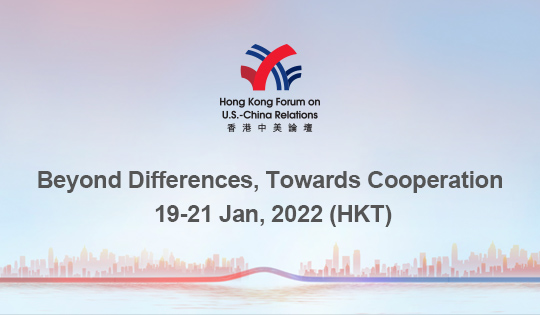U.S. Secretary of State Antony Blinken’s recent visit to South Korea included the third Summit for Democracy and a meeting with the Republic of Korea’s Foreign Minister Cho Tae-yul — the third in a month. He also met with ROK President Yoon Suk Yeol on the sidelines of the summit. The flurry of senior-level exchanges seemed intended to signal the strength of the alliance, which has evolved into a global comprehensive strategy.
As a close neighbor of South Korea and a country with a major stake in the future of the Korean Peninsula, China has always been cautious about developments in surrounding areas, especially in the context of its rising rivalry with the United States. The U.S.-ROK alliance has become an increasingly important pillar of U.S. policy, with the scope and depth of cooperation between the two enhanced day by day.
The trend illustrated by Blinken’s visit is troublesome for China in three respects:
First, the increasing military buildup and cooperation between the U.S. and ROK can only trigger increasingly serious responses from North Korea, further entrenching the existing action-reaction cycle and making the deadlock even more stubborn. Since Joe Biden was elected president of the United States — despite his expressed intent to open talks with North Korea — he has never denied the utility of military deterrence. The substantial cooperation on deterrence is particularly worrisome not only to North Korea but also to other countries in the region, including China.
In December, the U.S. and ROK agreed on guidelines for planning and using nuclear weapons, including information sharing, consultation procedures in the event of a nuclear crisis and the establishment of a security mechanism between the leaders of the two countries. They are also expecting to establish a scalable deterrent system by June this year.
Not only has the frequency of top-level exchanges been increased this year, the scale of threat has also been upgraded. Recent joint military exercises included a field maneuver training plan that was twice the size of last year’s, and it mobilized the armed forces of roughly a dozen member countries of the so-called United Nations Command. In the face of North Korean condemnation, more than a dozen countries, including the United States, have conducted large-scale military exercises targeting a single country. This can never be called defensive. And North Korea’s firing of multiple short-range ballistic missiles toward the East Sea on the day Blinken arrived in Seoul clearly signaled dissatisfaction with the provocative cooperation.
The upgrading of U.S.-ROK military ties and “extended deterrence,” as peddled by Blinken, neither ensures the peace and stability of the peninsula or the wider region. It will only break the already fragile strategic balance and further postpone the resolution of the Korean nuclear issue. It also undermines China’s interest in a peaceful and prosperous neighborhood.
Second, the U.S. is trying to build South Korea into a model of democracy and strengthen cooperation on rules against China, citing its political system. This deserves vigilance. Both the U.S. and South Korea endorse the cause of “better democracy” as the strategic glue that binds them more tightly together. That’s why both sides agreed to hold the recent Summit for Democracy in Seoul. President Yoon, a self-described advocate of “liberal democracy,” holds high the banner not only to boost domestic support but also as a way of catering to Biden, who considers the summit his signature initiative.
To gather countries against China with the rhetoric of democracy versus autocracy is certainly an attempt to tarnish China’s image. More important, Blinken is trying to impose the U.S. narrative regarding technology norms on the world. The American side is pushing urgently to establish leadership with respect to AI norms, for example. Avoiding entanglements with China has thus become a way of inducing cooperation by other countries.
During the summit, Blinken announced that additional countries are joining the American-led consortium focused on countering the misuse of commercial spyware and government surveillance. All these are integral parts of the American technological war against China — mounted in the name of ideological differences.
Third, the development of the U.S.-ROK alliance is increasingly comprehensive and global. On one hand, America seeks to tie issues involving North Korea, Russia and Ukraine together. By doing so, allies such as South Korea can share more of the burden of America’s geopolitical purposes in the global arena. In addition to allowing the ROK to impose sanctions on Russia (the number of items on its export control list has reached a high of 1,159), the U.S. also seeks to incorporate Pyongyang’s military support for Russia’s war against Ukraine into a shared concern of the alliance. The idea is to counter both Russia and North Korea simultaneously, and both China and North Korea have been pressured in the process.
On the other hand, while the U.S. underscores the significance of its alliance with the ROK — taking this as the linchpin of peace, security and prosperity in the Indo-Pacific region and beyond — it also wants to make the cooperation even more efficient and powerful. Therefore, it is increasingly prone to emphasize the importance of the U.S.-ROK-Japan trilateral relationship.
As noted by Blinken, tremendous progress has been made since the historic Camp David summit to institutionalize trilateral cooperation. Under this framework, North Korea, China and Russia are targeted by strategic cooperation. The rhetoric of economic security is also used with respect to supply chains, vital emerging technologies and digital domains — all with a view toward counterbalancing China collectively and comprehensively.
This concept is doomed mainly because the economies of South Korea and China are intertwined. Moreover, the ROK has significant domestic opposition to becoming a U.S. pawn or getting involved in any Sino-U.S. conflict. Thus, the U.S. dream of a solid alliance against China is just wishful thinking.
